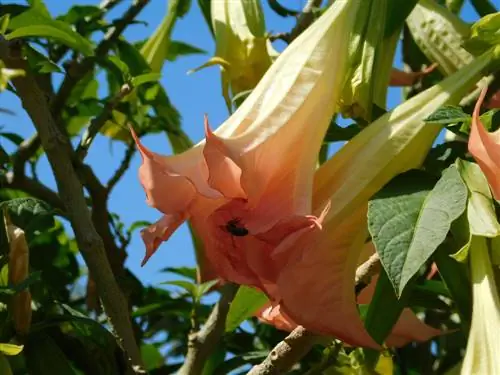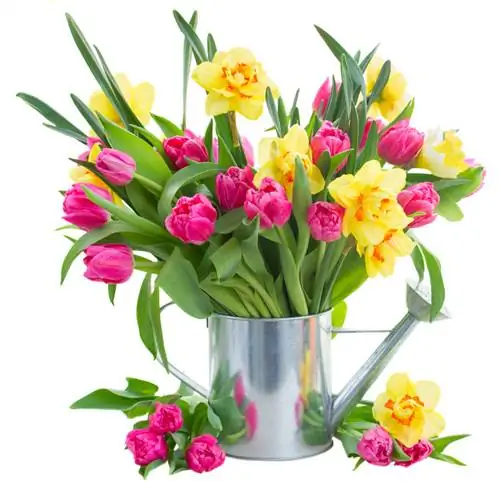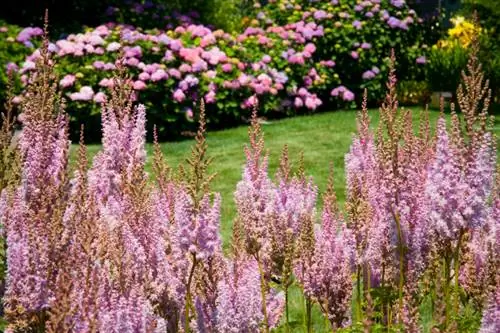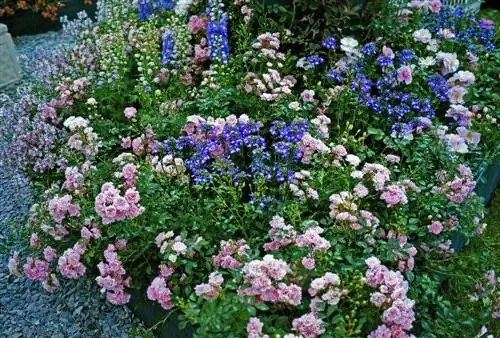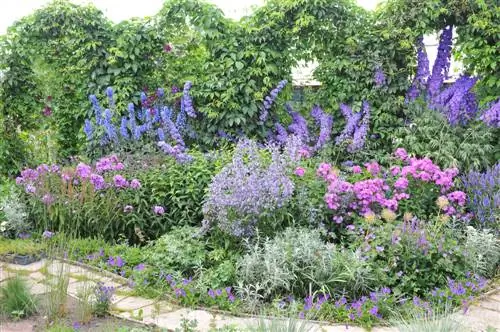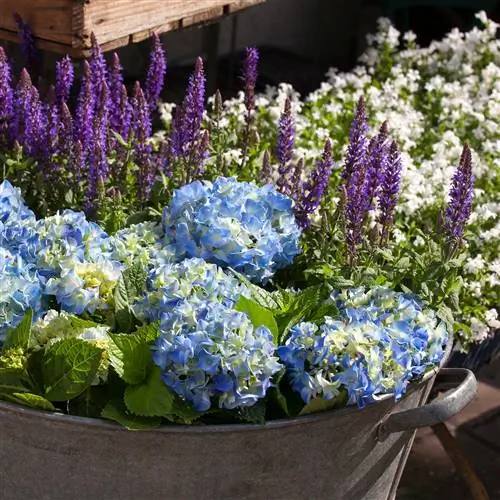- Author admin [email protected].
- Public 2023-12-16 16:46.
- Last modified 2025-01-23 11:22.
The South American Brugmansia genus does not let Central European bees down. At least one species of angel trumpet provides pollen and nectar to bees. Find out here which angel trumpet is so friendly to bees. With these tips you can perfectly integrate angel trumpets into your bee-friendly garden.
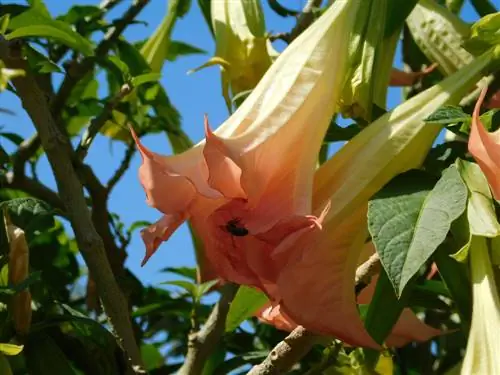
Which angel trumpet is bee-friendly?
The bee-friendly angel's trumpet is Brugmansia suaveolens, which has wide tubular calyxes and thus gives bees access to pollen and nectar. Hybrids such as 'Engelsbrücke' and 'Frosty Pink' are also suitable as bee pastures.
Which angel trumpet is friendly to bees?
Bees usually avoid angel trumpets. The calyxes, which are up to 40 cm long, are not suitable for harvesting pollen and nectar. Primarily tropical hawkmoth butterflies can use their epically long proboscis to help themselves to the food source. In one Brugmansia species, however, there is a lot of activity in summer. Especially during the evening hours, there are busy bees feasting on the valuable flower food.
Brugmansia suaveolens unfolds broad, tubular calyxes that allow native wild bees, honey bees and bumblebees access to the pollen and nectar buffet. Hybrids derived from the wild species are also useful as bee pastures. These include the magnificent angel trumpet varieties 'Engelsbrücke' with yellow, pink-edged flowers and 'Frosty Pink' with pink flower trumpets.
Are Brugmansia pollen toxic to bees?
The status of angel trumpets as highly poisonous plants is not relevant to bees. Any contact with the poisonous flowers and leaves goes unnoticed by bees. This does not apply to people and pets. Even consuming small amounts of angel trumpet can have life-threatening or even fatal consequences.
Is there a bee-friendly underplant for angel trumpet?
With bee-friendly underplanting, every angel's trumpet becomes a popular destination for wild bees and honey bees. This applies equally to Brugmansia in beds and containers. These shade-tolerant, small, ground-covering flowers and perennials are perfect as bee pasture:
- Männertreu (Lobelia erinus), height 15-30 cm, flowering period May to October.
- Marigold (Calendula officinalis), height 20-30 cm, flowering period May to October.
- Brown cranesbill (Geranium phaeum), height 40-50 cm, flowering period May to September.
- Carpet sedum (Sedum spurium), height 10-20 cm, flowering period July to September.
- Deadnettle (Lamium maculatum), height 20-25 cm, flowering period May to August.
Tip
Heavy fertilizing promotes bee-friendly flowers
If the angel's trumpet has a sea of flowers, hordes of bees will arrive. Regular fertilization makes an important contribution to lush flowers. The starting signal for the generous supply of nutrients comes when repotting. Mix a slow-release fertilizer into the substrate. From now on, add a liquid fertilizer for flowering plants to the irrigation water twice a week until August. Over-fertilization of heavy feeders is almost impossible.

